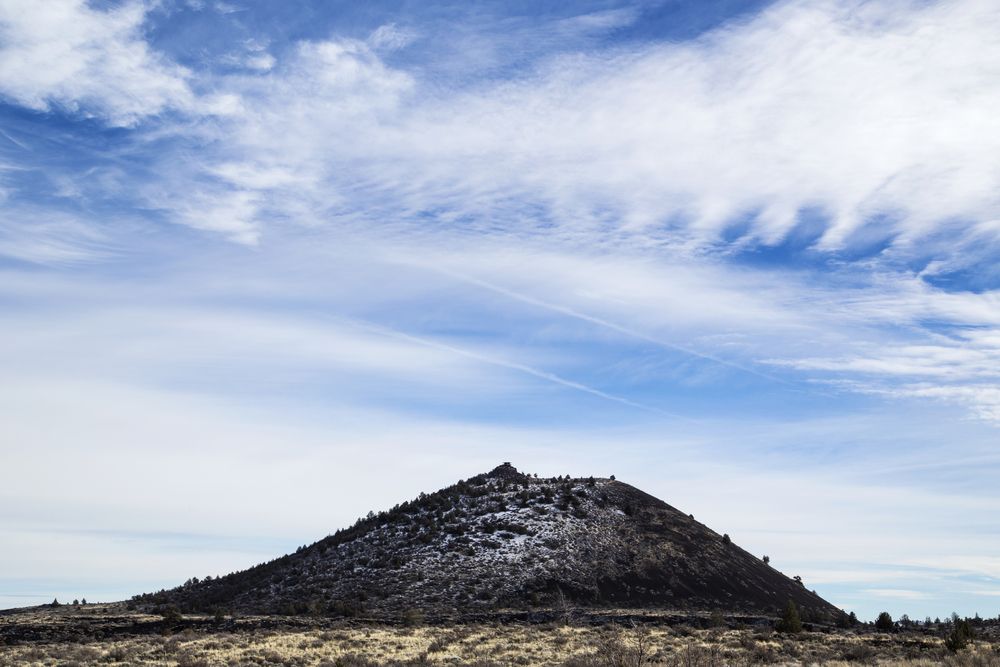Lava Beds National Monument in northeastern California protects the land and lava tube caves from a half-million years of volcanic eruptions from the Medicine Lake volcano.

Location: Lava Beds National Monument is located in northeastern California, near the Oregon border. Situated within the rugged landscape of the Modoc Plateau, the monument is approximately 50 miles southeast of Klamath Falls, Oregon, and 30 miles south of Tulelake, California.
History: Lava Beds was designated a national monument on November 21, 1925, by President Calvin Coolidge. The monument preserves a unique volcanic landscape formed by the eruption of the Medicine Lake Volcano over the past half-million years. This area is rich in geological and historical significance, offering visitors a glimpse into both the natural and cultural heritage of the region.
Why It’s Protected: Lava Beds National Monument is protected for its extraordinary geological features and historical importance. The monument is home to the largest concentration of lava tube caves in North America, with more than 700 caves formed by the cooling and solidification of molten lava. Additionally, the area holds significant cultural and historical value, as it was the site of the Modoc War between the Modoc people and the U.S. Army in 1872-1873. Protecting this unique landscape ensures the preservation of its natural wonders and the stories of its past.
Things to Do: Visitors to Lava Beds National Monument can engage in a variety of activities that showcase the area’s fascinating geology and history. Here are some highlights:
- Cave Exploration: With over 20 caves open to the public, visitors can explore the underground wonders of Lava Beds. Popular caves include Skull Cave, known for its ice floor, and Valentine Cave, with its smooth lava formations. Be sure to bring a flashlight and sturdy shoes for your caving adventure.
- Ranger Programs: Participate in ranger-led programs and guided tours to learn more about the monument’s geological features, history, and wildlife. These educational programs provide valuable insights into the unique aspects of Lava Beds.
- Hiking: The monument offers several hiking trails that showcase its diverse landscapes. The Thomas-Wright Battlefield Trail takes you through historic battlefields and offers panoramic views of the surrounding area, while the Captain Jack’s Stronghold Trail leads you to the historic stronghold used by the Modoc people during the Modoc War.
- Petroglyph Point: Visit Petroglyph Point, one of the largest concentrations of Native American rock art in California. The site features hundreds of ancient petroglyphs etched into the cliff face, offering a glimpse into the cultural heritage of the Modoc people.
- Wildlife Watching: Keep an eye out for the diverse wildlife that inhabits the monument, including mule deer, pronghorn antelope, and a variety of bird species. The diverse habitats within Lava Beds provide excellent opportunities for wildlife observation and photography.
- Scenic Drives: Take a scenic drive through the monument to enjoy the stunning volcanic landscapes and panoramic views. The main park road, Lava Beds Scenic Byway, offers access to many of the monument’s key attractions and provides a picturesque route through the rugged terrain.
- Star Gazing: The remote location of Lava Beds National Monument makes it an ideal spot for stargazing. On clear nights, visitors can enjoy breathtaking views of the night sky, with minimal light pollution to obstruct the celestial display.
Lava Beds National Monument is a captivating destination that offers a unique blend of geological wonders and historical significance. Whether you’re an avid caver, history buff, or nature lover, this hidden gem provides a wealth of experiences and discoveries for all who visit.
Agate Fossil Beds
Aztec Ruins
Bandelier
Bears Ears
Cabrillo
Canyon de Chelly
Cedar Breaks
Colorado
Devils Postpile
Devils Tower
Dinosaur
Effigy Mounds
El Malpais
Florissant Fossil Beds
Fort McHenry
Fort Moultrie
Fort Pulaski
Fort Stanwix
Fort Sumter
George Washington Birthplace
Gila Cliff Dwellings
Grand Staircase-Escalante
Hovenweep
Lava Beds
Little Bighorn Battlefield
Misty Fjords
Montezuma Castle
Muir Woods
Natural Bridges
Ocmulgee
Organ Pipe Cactus
Pipestone
Pompeys Pillar
Rainbow Bridge
Russell Cave
Salinas Pueblo Missions
Scotts Bluff
Statue of Liberty
Sunset Crater Volcano
Tuzigoot
Vermilion Cliffs
White Sands
World War II Valor in the Pacific
Wupatki
